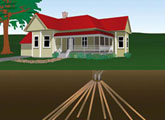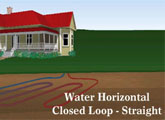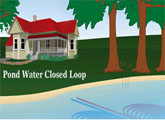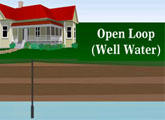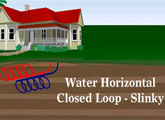Geothermal Design Resource Center

Are you looking to install a complete heating and cooling system that will save you a lot of money?
Interested in lessening your carbon footprint and creating a safer environment for your children? Create a comfortable climate in your home by using a geothermal system. Cost effective and energy efficient, geothermal uses natural energy to heat and cool your home.
Geothermal works by using an underground loop system to keep your home at a consistent and comfortable temperature, by exchanging energy from your home and the earth. Your lawn becomes the permanent power plant for your home. This provides the most comfortable and reliable energy in addition to being the most efficient heating, cooling, and water heating system available on the market today.
Geothermal works by harnessing the energy of the earth.
The earth absorbs almost 50 percent of all solar energy and remains at a nearly constant temperature, between 50 to 70 degrees depending on geographic location. An underground loop system utilizes this constant temperature to exchange energy between your home and the earth as needed for heating and cooling.
During colder months refrigerant or a water/antifreeze solution circulates inside the sealed underground loop system and absorbs the heat from the earth and carries it to the geothermal heating unit. Fluid pumped into the system is released into the warm air ducts of your indoor system as heat for circulation throughout your home.
During the summer the system reverses and expels heat from your home into the cooler earth. The process is not only natural, but a highly efficient way to create a comfortable climate in your home.



